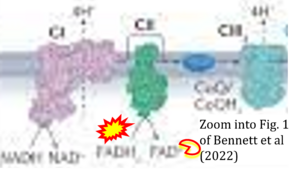Bennett 2022 Nat Rev Mol Cell Biol
| Bennett CF, Latorre-Muro P, Puigserver P (2022) Mechanisms of mitochondrial respiratory adaptation. Nat Rev Mol Cell Biol 23:817-35. https://doi.org/10.1038/s41580-022-00506-6 |
Bennett CF, Latorre-Muro P, Puigserver P (2022) Nat Rev Mol Cell Biol
Abstract: Mitochondrial energetic adaptations encompass a plethora of conserved processes that maintain cell and organismal fitness and survival in the changing environment by adjusting the respiratory capacity of mitochondria. These mitochondrial responses are governed by general principles of regulatory biology exemplified by changes in gene expression, protein translation, protein complex formation, transmembrane transport, enzymatic activities and metabolite levels. These changes can promote mitochondrial biogenesis and membrane dynamics that in turn support mitochondrial respiration. The main regulatory components of mitochondrial energetic adaptation include: the transcription coactivator peroxisome proliferator-activated receptor-γ (PPARγ) coactivator 1α (PGC1α) and associated transcription factors; mTOR and endoplasmic reticulum stress signalling; TOM70-dependent mitochondrial protein import; the cristae remodelling factors, including mitochondrial contact site and cristae organizing system (MICOS) and OPA1; lipid remodelling; and the assembly and metabolite-dependent regulation of respiratory complexes. These adaptive molecular and structural mechanisms increase respiration to maintain basic processes specific to cell types and tissues. Failure to execute these regulatory responses causes cell damage and inflammation or senescence, compromising cell survival and the ability to adapt to energetically demanding conditions. Thus, mitochondrial adaptive cellular processes are important for physiological responses, including to nutrient availability, temperature and physical activity, and their failure leads to diseases associated with mitochondrial dysfunction such as metabolic and age-associated diseases and cancer.
• Bioblast editor: Gnaiger E
Correction: FADH2 and Complex II
- FADH2 is shown as the substrate feeding electrons into Complex II (CII). This is wrong and requires correction - for details see Gnaiger (2024).
- Gnaiger E (2024) Complex II ambiguities ― FADH2 in the electron transfer system. J Biol Chem 300:105470. https://doi.org/10.1016/j.jbc.2023.105470 - »Bioblast link«


